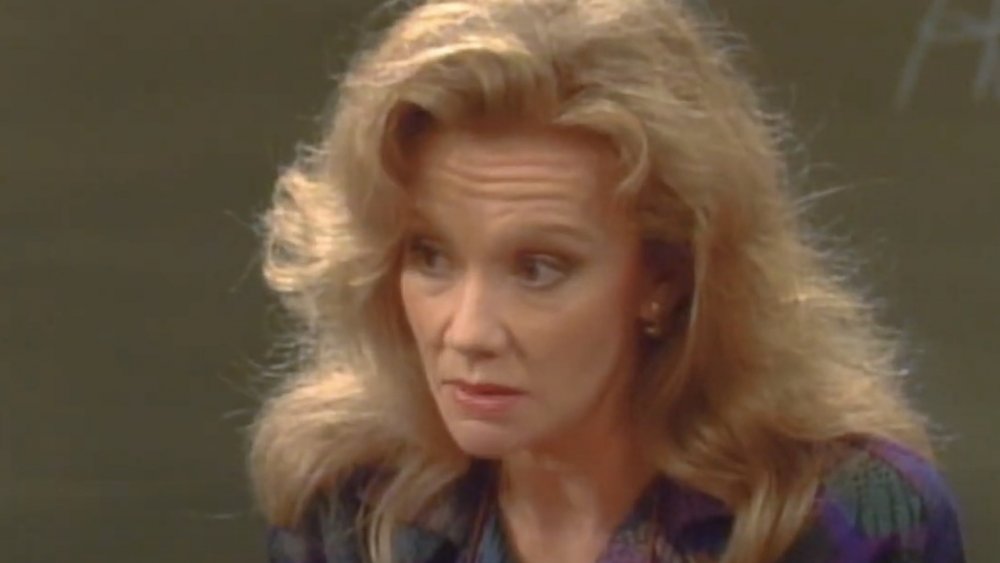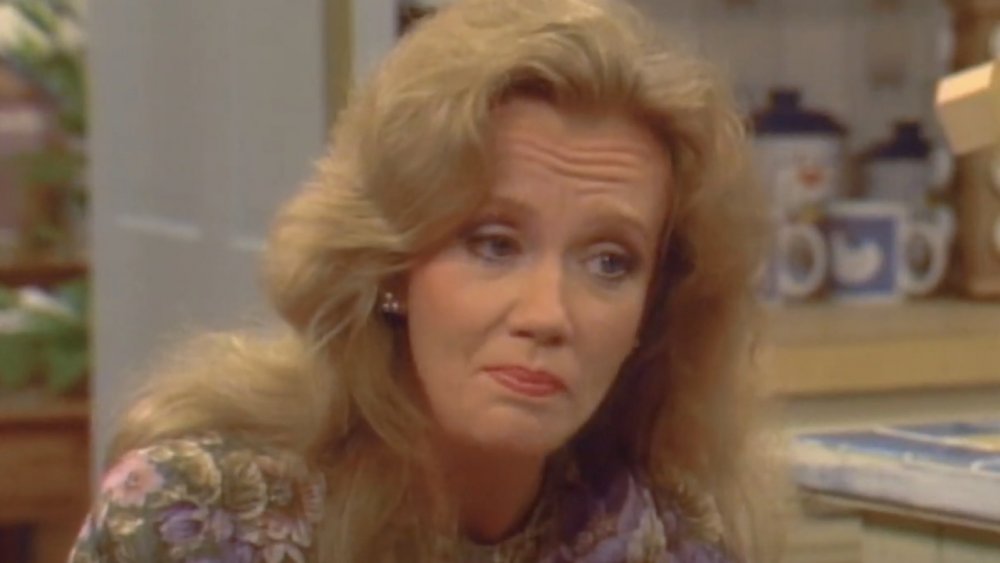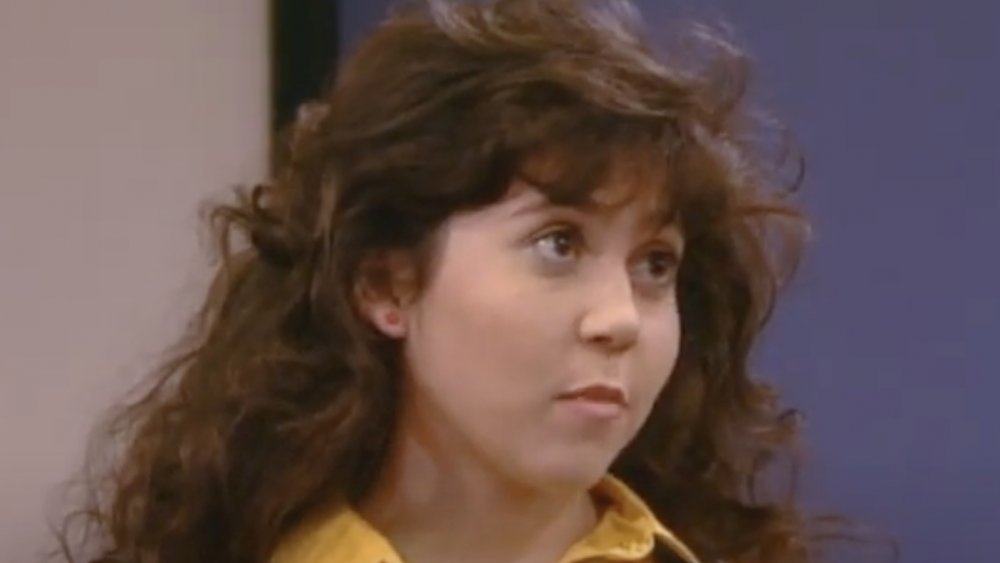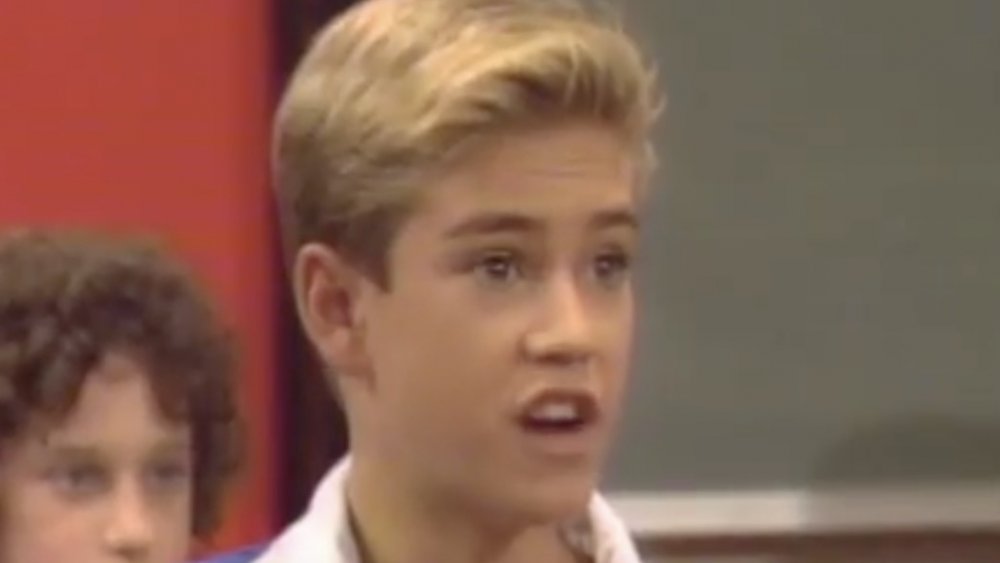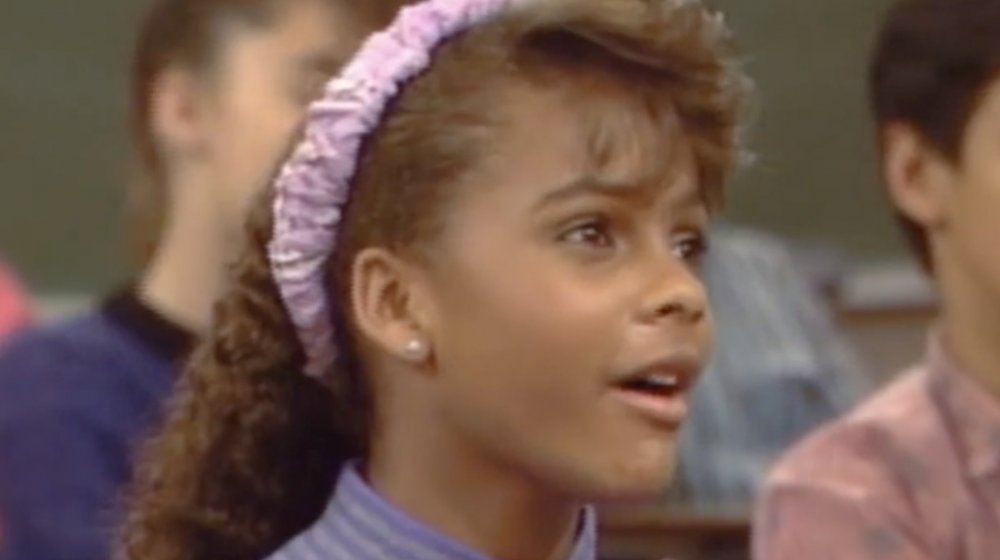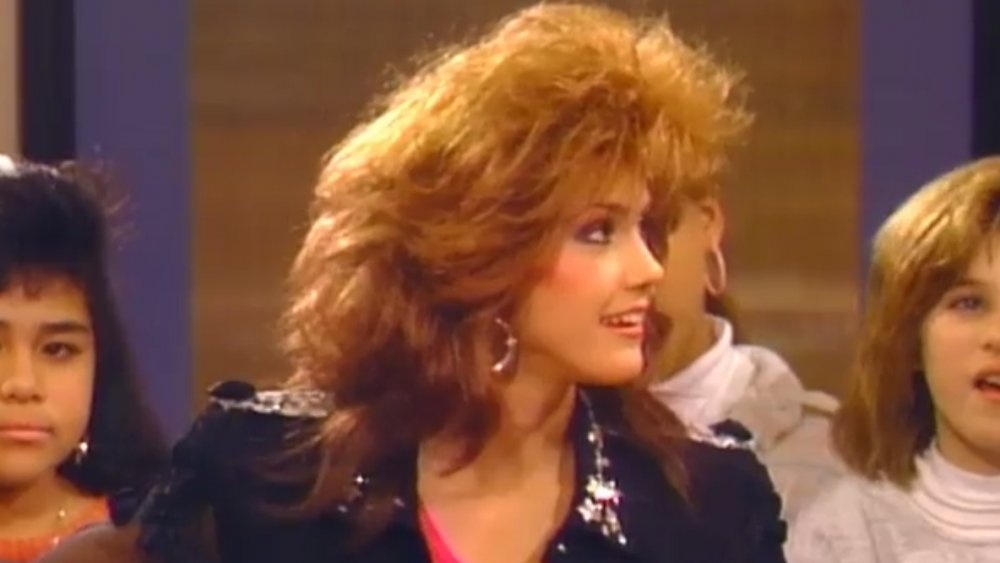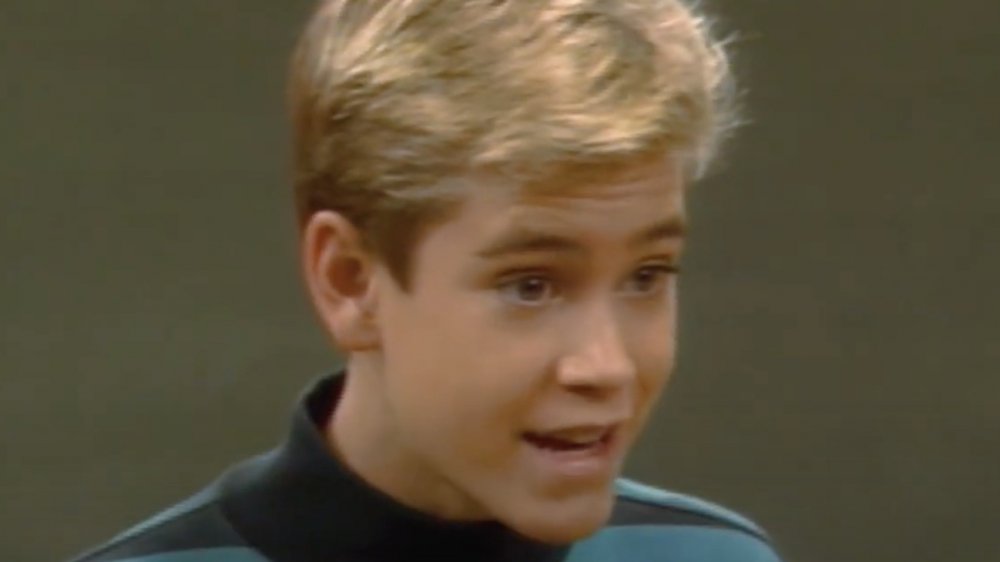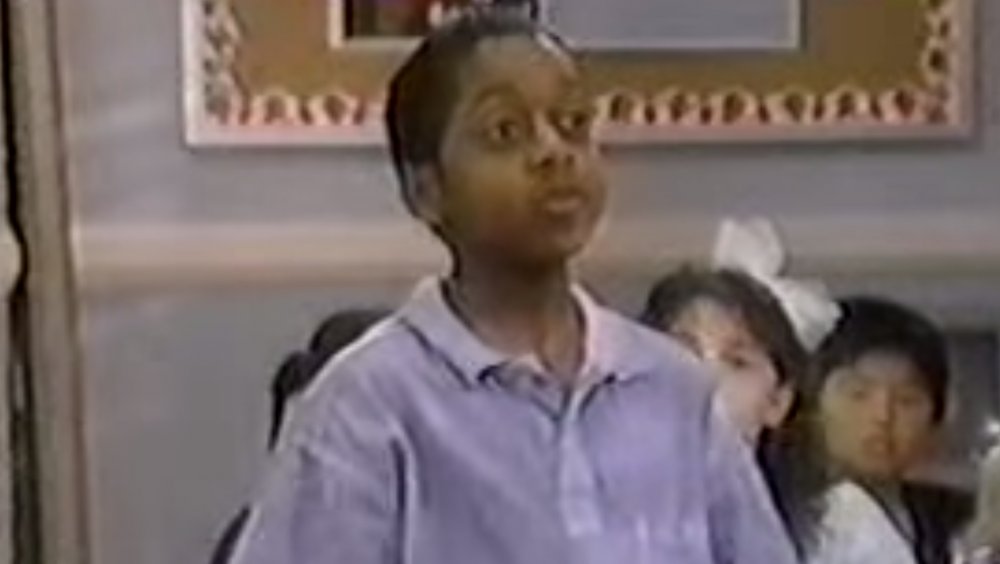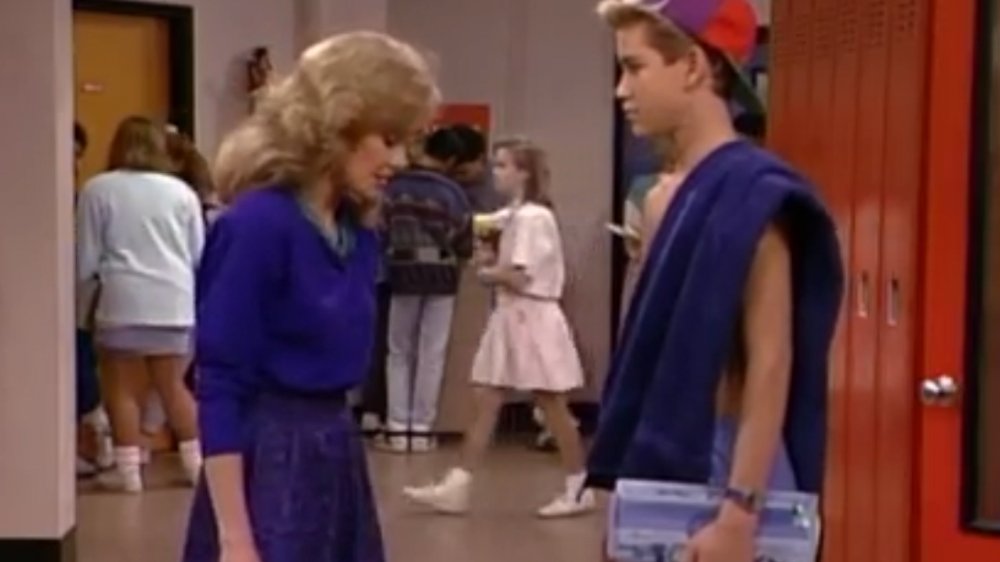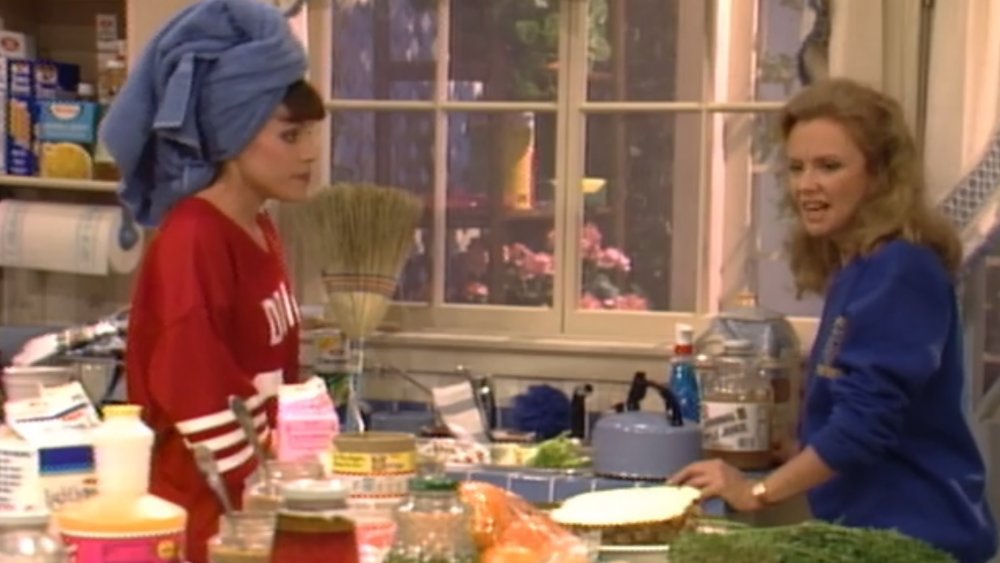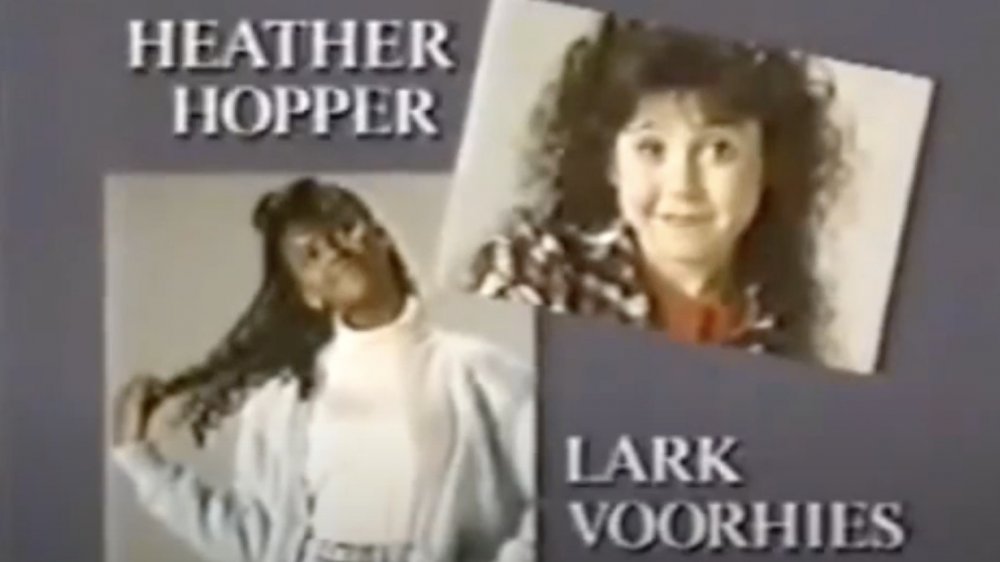The Untold Truth Of Good Morning, Miss Bliss
In the fall of 1988, a new comedy show debuted on the Disney Channel. Good Morning, Miss Bliss heralded the triumphant return to the House of Mouse for Hayley Mills, the now-adult former child actor who had starred in some of Disney's most beloved live-action films of the 1960s, especially Pollyanna and The Parent Trap. Good Morning, Miss Bliss was very short-lived, quickly canceled, and not all that much of a success during its original run. It's more famous (and popular) for what it became. Good Morning, Miss Bliss, after airing on the Disney Channel, jumped to NBC and was extensively reworked into the cornball, California-set classic teen sitcom Saved by the Bell.
Good Morning, Miss Bliss exists in the same universe as the show where Zack Morris, Screech, and Mr. Belding ruled Bayside High, but it's still a quirky footnote in TV history. Here's a look into the brief but influential run of Good Morning, Miss Bliss.
Good Morning, Miss Bliss was personally ordered by the president of NBC
In 1986, NBC president Brandon Tartikoff signed Peter Engel to be an in-house producer for the network. Then he called him in for a meeting to give him his first assignment. "As a kid, I had a very special teacher," Engel recalled Tartikoff saying in his memoir, I Was Saved by the Bell. "She made a big impact on me. Second only to my parents and grandpa." Her name was Miss Bliss, and Tartikoff said that he'd "always wanted to make a show about a sixth grade teacher like her."
Engel got a schedule and some budgetary figures and was sent off on his way. He admits that he didn't care much for the concept but was ordered by his boss to do it, so he hired former Bewitched and The Andy Griffith Show writer Sam Bobrick to compose the pilot. Former Disney child star Hayley Mills signed on to play the beatific Miss Bliss, an Indianapolis teacher, but she was the producers' second choice. According to E! Online, they initially went after Tony-nominated stage star Sandy Duncan, who instead joined the cast of NBC's The Hogan Family right around the same time.
Good Morning, Miss Bliss was a pioneer in the business of television
By the time the pilot was ready, NBC had passed on the right to make Good Morning, Miss Bliss into a regular series. Network president Brandon Tartikoff didn't want to buy a full season of episodes because it wasn't right for NBC prime time. It could, however, play well at the Disney Channel on cable TV. A year after the 1987 Good Morning, Miss Bliss pilot came and went, Disney ordered 13 episodes of the show — NBC would produce them, while Disney would broadcast them. It's an arrangement common in TV today, as many networks' in-house production companies wind up selling shows to other broadcasters (for years, Fox aired the NBC-produced Brooklyn Nine-Nine, for example), but in the late 1980s, such a deal was completely unheard-of in the TV industry.
Good Morning, Miss Bliss is the first show produced by an over-the-air network for a cable outlet. Executives from many of NBC's affiliate stations uneasily and begrudgingly approved the deal, even though the Disney Channel was nowhere near competitive with NBC, boasting four million homes to NBC's 88 million. "Does it make me happy? Not at all," Tom Goodgame, president of one station ownership group, told the Los Angeles Times. "But the industry is changing, and I think they're smart enough to know they've got to change with it."
Good Morning, Miss Bliss flopped on the Disney Channel
If the initial order of 13 episodes performed in a manner agreeable to Disney Channel executives, then they had the right to order a whopping 77 more from NBC. Such an immediately guaranteed large episode count, which would give NBC enough Good Morning, Miss Bliss episodes to syndicate its reruns to hundreds of local TV stations, was, as executive producer Peter Engel said in his memoir, I Was Saved by the Bell, "unheard of."
But to get both Disney and its viewers interested, Engel and NBC president Brandon Tartikoff agreed that Good Morning, Miss Bliss would need to change. In the summer of 1988, Engel wrote a new pilot for the new Good Morning, Miss Bliss. He eliminated all of the students from the original version, moved the setting from sixth grade to eighth grade, and built the show around a new character: Zack, "a charmer, a scammer, a swindler" who "did the right thing in the end" but who was also "that incorrigible kid who could lie to your face." Then he added more eighth-graders, including Zack's loyal BFF Mikey, nerd Screech, earnest Nikki, and superficial Lisa.
With those kids under the tutelage of Miss Bliss, a format was solidified, and 13 episodes were shot and shown. They weren't a blockbuster success on the Disney Channel in the 1988-89 season, however, and Good Morning, Miss Bliss was canceled in the spring of 1989, unable to secure that 77-episode renewal.
The role of Lisa was changed to suit actress Lark Voorhies
In the TV world of 2020, producers are actively working toward more diverse and inclusive casts. It's progressive and surprising that Good Morning, Miss Bliss, a kiddie sitcom which was the basis for Saved by the Bell, was one of the few not-all-Caucasian shows on television in 1988. Lead actor Mark-Paul Gosselaar (Zack Morris) is the son of a Filipino mother, Argentina-born Max Battimo played Latino character Mikey Gonzalez, and African-American performers T.K. Carter and Lark Voorhies portrayed maintenance supervisor Mylo Williams and rich fashionista Lisa Turtle, respectively.
The latter role, which Voorhies played all the way until 1993 on Saved by the Bell, was not initially written for a Black actor but conceived, as Voorhies said in a Bell DVD special feature, "for a Jewish-American princess." But when Lark Voorhies was brought into executive producer Peter Engel's office one day, not for an audition but for what he said was a "meet-and-greet," he was so taken with Voorhies that he asked casting agents to "have her read," or audition. "They said, 'Have her read what?' I said, 'Have her read Lisa Turtle.' They said, 'But she's not Black.' And I said, 'She is now," Engel recalled.
A Good Morning, Miss Bliss guest star didn't have to come from too far away
"Stevie," one of the last episodes in the first and only season of Good Morning, Miss Bliss, expanded the universe of the show just a little and also characterized main character Carrie Bliss (Hayley Mills) as a successful, impactful teacher, the kind that high-achieving former students come back and visit years later. In this instance, it's Colleen Morton, who Miss Bliss unabashedly counts as one of her all-time favorite students, but then maybe she's just starstruck because Colleen went on to be Stevie, a teen pop star in the late '80s Debbie Gibson or Tiffany mold.
Portraying Colleen/Stevie and even singing a little in the episode: novice actress Suzanne Tara, who, at the time, had only landed a scant couple of small roles in Hollywood. In fact, she hadn't yet quit her day job, as the saying goes, when she portrayed Stevie on Good Morning, Miss Bliss. According to an interview with cast member Heather Hopper, Tara worked in the cafeteria in the NBC production facility where Good Morning, Miss Bliss taped its episodes. Hopper recognized her temporary co-star from seeing her around the lunchroom.
How Good Morning, Miss Bliss became Saved by the Bell
Good Morning, Miss Bliss, inasmuch as it was an experiment undertaken by the Disney Channel with NBC's consent, was a failure. The family-friendly cable network ordered 13 episodes of the Hayley Mills series, aired them, and wasn't pleased with how they performed with viewers. Not enough people watched for Disney's liking, and the network canceled the show. But because NBC produced the show, the broadcast network owned it and could do with it as it pleased. After the Disney Channel gave up on Good Morning, Miss Bliss in 1988, NBC reclaimed it, and creator Sam Bobrick and executive producer Peter Engel were tasked with revamping it entirely, in time for the start of the 1989-1990 television season.
Bobrick and Engel changed almost everything, swapping out the junior high in Indiana setting for Bayside High School in Pacific Palisades, California. The focus would be on the students rather than teachers, so all of the adults were dropped, with the exception of Dennis Haskins as Principal Belding. The characters of Zack Morris, Samuel "Screech" Powers, and Lisa Turtle (played by Mark-Paul Gosselaar, Dustin Diamond, and Lark Voorhies, respectively) magically moved to SoCal, too. Nikki Coleman (Heather Hopper) and Mikey Gonzalez (Max Battimo) did not.
There's another, abandoned early version of Good Morning, Miss Bliss
So before there was an NBC Saturday morning show about California teens called Saved by the Bell, there was a Disney Channel sitcom about a lovable teacher called Good Morning, Miss Bliss. But before that even, there was another version of Good Morning, Miss Bliss that doesn't much resemble either series. Hayley Mills was present, but rather than recently widowed, she's married to a guy named Charley (Charles Siebert), who gently resents all the time his wife spends dealing with her students.
While all these characters wouldn't make it to the next iteration of Good Morning, Miss Bliss, many of those kids were all portrayed by future teen stars. Brian Austin Green (Beverly Hills, 90210) played suit-wearing, business-obsessed, preppy Adam, Jonathan Brandis (SeaQuest DSV) was emotionally distant bad boy Michael, and Jaleel White (Steve Urkel on Family Matters) played wiry class clown Bobby. Mr. Belding was there, albeit inhabited by character actor Oliver Clark, not Dennis Haskins. The pilot, which wasn't picked up to a series but was later reworked into the Good Morning, Miss Bliss with Zack and Screech, aired just once on NBC, on a little-watched night of summer television in July 1987.
Producers awkwardly bridged the gap to Saved by the Bell
After two years of original episodes airing on NBC on Saturday mornings, Saved by the Bell entered syndication in the fall of 1991, where local stations aired reruns in after-school or early evening time slots five days a week. When most sitcoms enter what's called "strip syndication," they've got around four full seasons of episodes in the can, ensuring that months go by before the cycle of content repeats. Saved by the Bell only had two seasons by that point, so distributors made the package larger and more attractive by adding the 13 episodes of the sort-of prequel series Good Morning, Miss Bliss.
To explain these not-quite-Saved by the Bell episodes, Mark-Paul Gosselaar taped a series of in-character introductions as Zack Morris explaining that such episodes depicted events that occurred "back in junior high." He didn't make any attempt to explain why he and his friends (and principal) from California were all based at the same Indiana junior high.
Mikey became a hockey ref
The differences between Good Morning, Miss Bliss and Saved by the Bell are most noticeable and pronounced in the character list. Zack, Lisa, and Screech are the kids who made the cut. Mikey Gonzalez, Zack's curious and agreeable best friend, did not. Portraying Mikey was one of the first acting gigs for child performer Max Battimo, who previously appeared on episodes of the '80s horror-romance Beauty and the Beast and the soap Santa Barbara. In 1989, he appeared in a movie, a short, and an unsold pilot, and that was it for Battimo's acting career.
He willingly walked away when Good Morning, Miss Bliss turned into Saved by the Bell, from which he was rejected — his contract wasn't renewed with the reboot. "I was so hurt," he told ESPN. "I told my parents I didn't want to be in acting anymore." Shortly thereafter, Battimo became extremely interested in hockey. He set out to go pro but took a different path, becoming a professional hockey official. He's referreed games for several junior hockey leagues and the collegiate circuit.
Tina Paladrino moved to the other side of the camera
Because Good Morning, Miss Bliss turned into Saved by the Bell, a show about the students and not so much the teachers, all of the educators (except for bumbling principal Mr. Belding) didn't make the cut. Along with Hayley Mills, aka Miss Bliss herself, Joan Ryan was written out of the show, too. In the 13 episodes of Good Morning, Miss Bliss, Ryan, primarily a musical theater actress, portrayed Miss Bliss' fellow teacher and kooky, unhappily single best friend Tina Paladrino.
That became Ryan's most prominent screen role — she went on to land guest-star roles and short stints on The Young and the Restless and Chicago Hope before disappearing from TV entirely, re-emerging in 2013 for the indie action-comedy Hot Guys with Guns. Parallel with her acting career in the '90s, Ryan became a professional in voice casting, working on post-production audio in projects like Happy Gilmore and Tracey Takes On...
The lost theme song from Good Morning, Miss Bliss
The original 1989-1993 run of Saved by the Bell boasts one of the catchiest theme songs in TV history. Performed by late 1980s hitmaker and soap star Michael Damian, the memorable tune about buses flying by, teachers popping tests, and the saving power of bells was written by veteran TV composer Scott Gale. When the 13 episodes of Good Morning, Miss Bliss assimilated into the Saved by the Bell rerun package, its own original theme song and introductory sequence was eliminated in favor of a specially created one set to Damian's Saved by the Bell song, featuring clips from the prequel series. Good Morning, Miss Bliss had a song, also written by Gale, that aired only during the show's brief Disney Channel run.
That theme would be all but lost if not for YouTube, which saves for posterity this gentle, treacly, and sentimental bit of soft rock. Rather than clips from the show, the sequence is composed entirely of still publicity shots of the Good Morning, Miss Bliss cast.
